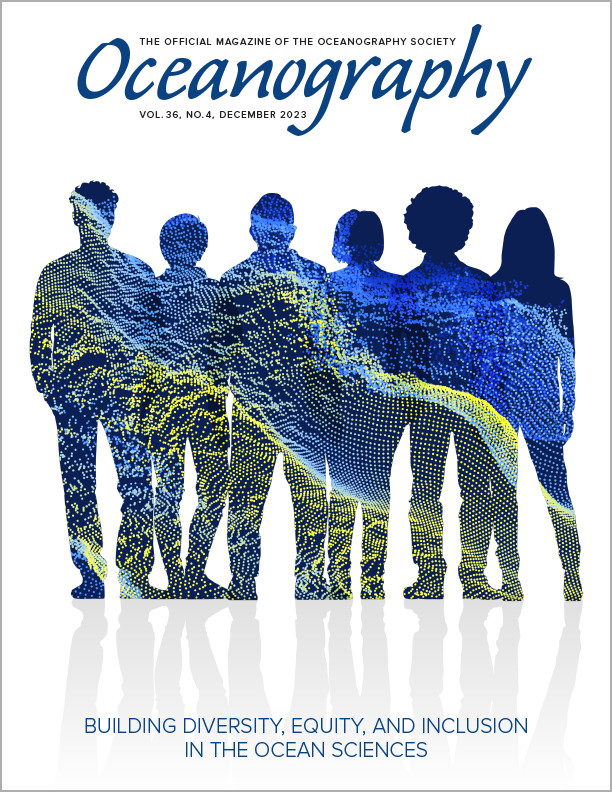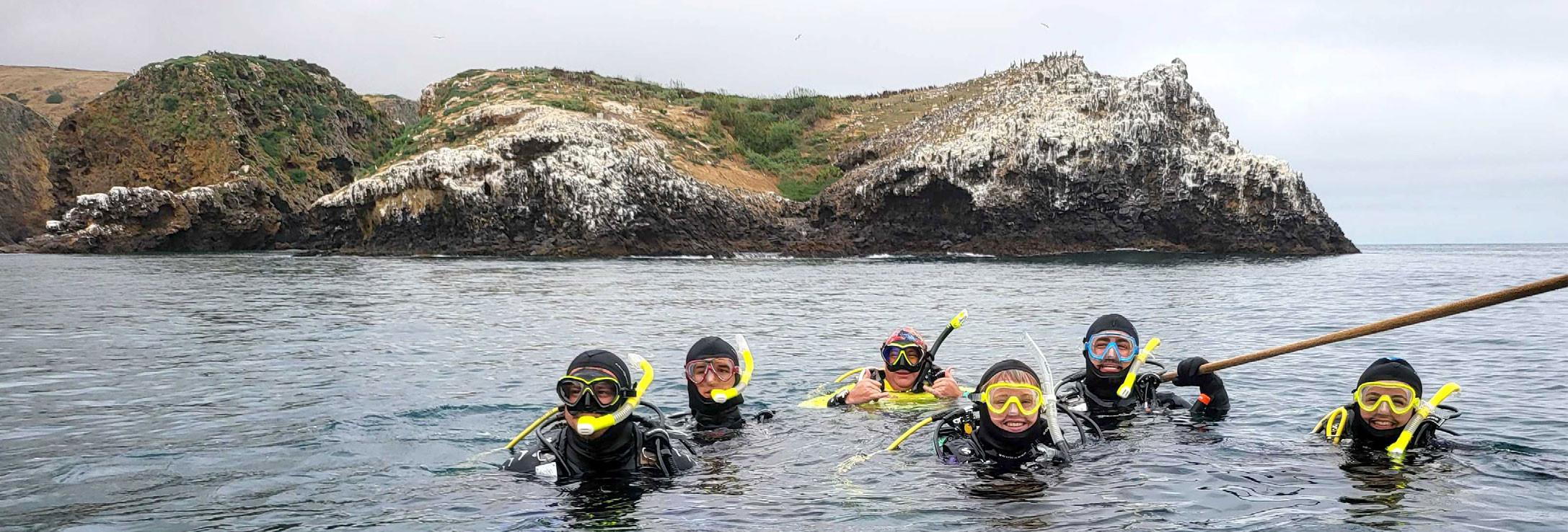Full Text
INTRODUCTION
Participation in field experiences has been shown to increase students’ confidence, scientific identity, retention, and academic performance (Beltran et al., 2020; Zavaleta et al., 2020). This is particularly true for students from historically excluded groups1 in ecology and evolutionary biology (EEB). For the purposes of this paper and the novel funding program described herein, field experiences are learning and research opportunities in natural settings that provide students with hands-on, discipline-specific practice and experience (e.g., Morales et al. 2020).
Like EEB, marine science often involves fieldwork, including in remote and isolated locations and on research vessels. For many students, their first field experience can be transformative and catalytic if they have a positive experience. Unfortunately, extra costs associated with field experiences can be prohibitively expensive. These extra costs are a real and significant barrier for economically challenged students that either completely prevents them from participating or creates conditions in which participation is not a fulfilling and rewarding experience. For example, students may need expensive personal equipment such as scuba gear and wetsuits to get in the water, or tents, sleeping bags, and rain gear to spend multiple days at a field site. Without the appropriate personal equipment, fieldwork can be unpleasantly cold, hot, wet, and even unsafe, which may lead students to decide that fieldwork and marine science are not for them. This dilemma is best described by Giles et al. (2020), which is geology-specific but relevant nonetheless:
For students new to geoscience, especially those who didn’t have access to hiking and camping trips growing up, many items that seasoned field geoscientists take for granted, such as sturdy boots, good waterproofs [raingear], and a reliable backpack, must be purchased. This financial burden can be substantial, and typically occurs at a time when students face numerous other new costs. As a result, students often go to the field unprepared and are unlikely to enjoy the experience—having cold and wet feet for a week can understandably erode the desire to learn.
1 We consciously use the term “historically excluded groups” rather than “underrepresented minorities” to refer to people who are Hispanic, Latina/o, Black or African American, Asian, Pacific Islander or Native Hawaiian, American Indian, or Alaska Native; immigrants; female; LGBTQIA+; first-generation college students; economically disadvantaged; veterans; and have disabilities. Use of this term is meant to imply that exclusion was active and deliberate: the underrepresentation of certain groups was not passive or the result of lack of interest. We also choose not to abbreviate the term because it is crucial to remember that these are people, and their identities should not be reduced to a series of letters.
|
|
PROGRAM DESCRIPTION
The California State University (CSU) Council on Ocean Affairs, Science & Technology (COAST) is a consortium for ocean and coastal research, education, and workforce development within the CSU, the nation’s largest public four-year university with more than 450,000 students, 90% of whom are undergraduates. Twenty-one of the CSU’s 23 individual campuses are Hispanic Serving Institutions (HSIs), more than 70% of students are people of color, more than 80% receive financial aid, and nearly 33% of undergraduates are the first person in their family to attend college (CSU, 2023). COAST is funded primarily by the CSU Chancellor’s Office and annual contributions from each campus and is perfectly positioned to use its resources to increase equitable participation and inclusion in marine science for students from historically excluded groups.
We established the Field Experiences Support Program in May 2022 to provide students with the financial resources needed to engage in ocean and coastal field experiences and to do so in a way that is equitable and inclusive. Awards up to $2,000 enable students to:
- Purchase personal gear needed to engage in fieldwork (e.g., waders, waterproof boots/shoes, foul weather gear, tents, sleeping bags/pads, wetsuits, scuba gear)
- Travel to take a field course or conduct course-based fieldwork
- Pay fees and other costs for field courses, such as room and board at a marine laboratory
Undergraduate and graduate students engaged in ocean and coastal fieldwork through classes, independent research under faculty mentorship, and/or field courses may apply. The program is year-round; applications are accepted on a rolling basis and considered in the order received (see Lessons Learned below for a note about applications associated with courses). The program is advertised across the CSU through our website and social media platforms, via faculty and student email lists, and by course instructors. Priority is given to applicants who have little or no field experience.
To apply, students have to:
- Describe their history of field experience. In this section, the application form clearly states, “Priority will be given to students who have little or no field experience” and “It is perfectly fine if you do not have any field experience, and you can state that plainly. For example, you can write ‘I do not have any field experience.’”
- Provide a budget. We provide detailed instructions and an example budget that lists several items from REI and Amazon as well as mileage expenses. We specifically chose to include REI items to convey to students that it’s fine to purchase high-quality, well-made items that may be expensive but will last.
- Describe how the award will allow them to do something they wouldn’t be able to do otherwise or wouldn’t be able to do without creating significant financial hardship. This is not difficult for CSU students, 80% of whom receive financial aid and many of whom work part- or full-time in addition to attending school.
- Describe the fieldwork they will engage in.
- Have their course instructor or faculty research mentor submit a simple email endorsing their request for support. Note: the endorsement is not a letter of recommendation. Examples can be found in the online supplementary material.
Students can receive up to $2,000 through this program as either a CSU undergraduate or graduate student. If a student attends the CSU for both undergraduate and graduate education, they are limited to a lifetime maximum of $4,000. Students may apply to this program more than once until they reach the undergraduate, graduate, or lifetime limit but can receive only one award per academic year.
RESULTS
Since May 2022, we have made 101 awards totaling $115,600 to 82 undergraduates and 19 graduate students. In the program’s first two months (May and June 2022), we received 27 applications requesting more than $46,000. We made 17 awards totaling $26,000. In the first full year of the program (July 1, 2022, to June 30, 2023), we received 101 applications requesting more than $142,000. We had initially budgeted $50,000, but reallocated funds from other parts of our budget and ultimately made 79 awards totaling $85,000. We have budgeted $50,000 for July 1, 2023–June 30, 2024, but we anticipate overwhelming demand for this program and will reallocate funds to meet that demand if possible.
Data from post-award reports show that 66% of awardees identify as female or non-binary/non-conforming students; 51% identify as members of a historically excluded racial or ethnic group; 34% are the first person in their family to attend college; and 71% receive financial aid.
Student feedback indicates that these awards reduce or remove some of the barriers and anxiety associated with fieldwork, which allows them to focus on the experience itself. Awardees state that these awards help them form their scientific identities and increase their sense of belonging, skills, and confidence. Please see the online supplementary material for quotes from award recipients that illustrate the significant impact of this program and demonstrate that it’s functioning exactly as intended.
LESSONS LEARNED
There is overwhelming and often unmet demand for this type of funding. Thus far, we have had the flexibility to reallocate funds from other parts of our budget to this program to meet demand. This is a labor-intensive program, in part because of the sheer number of applications and awards. Awardees receive individual award letters and are obligated to complete post-award reports describing how their awards were spent and the impact it had on them. Awards are made through students’ campus financial aid offices, and this can have financial implications and complications. It takes a significant amount of staff time to make each award, understand the awardee’s individual financial situation, and track the funds and student reports.
One thing we did not anticipate was the number of requests for personal gear and travel expenses associated with courses that have field components, such as 7–10 day trips to Hawai‘i or Honduras as part of semester-long coral ecology classes, or for scuba certification courses. Once we receive more than two applications associated with a class, we contact the instructor and work with them to set a deadline by which all students in the class must submit their applications so we can evaluate them collectively. We have a maximum cap of $5,000 for any one class, and this amount is distributed equally among the applicants. This is the most equitable way to distribute the funding associated with classes rather than a first-come-first-served approach.
This program is extremely effective in reducing financial barriers to participating in fieldwork and is reproducible if there are financial resources and sufficient staff time. We encourage anyone who wants to develop a similar program to contact us for additional information on organization and implementation. For a relatively small investment per student, this support can make a huge impact, especially when combined with other high-impact practices that increase student success (e.g., hands-on research, faculty mentoring, cohort experiences).
We recognize that there are other barriers to participation that this program does not address. Making marine science and other fields more equitable and inclusive will take efforts on many scales and from a variety of organizations. Funders, academics, agencies, and nonprofit organizations must continue to develop intersecting programs that increase accessibility, equity, and inclusion for researchers from diverse backgrounds at all stages of their careers.


